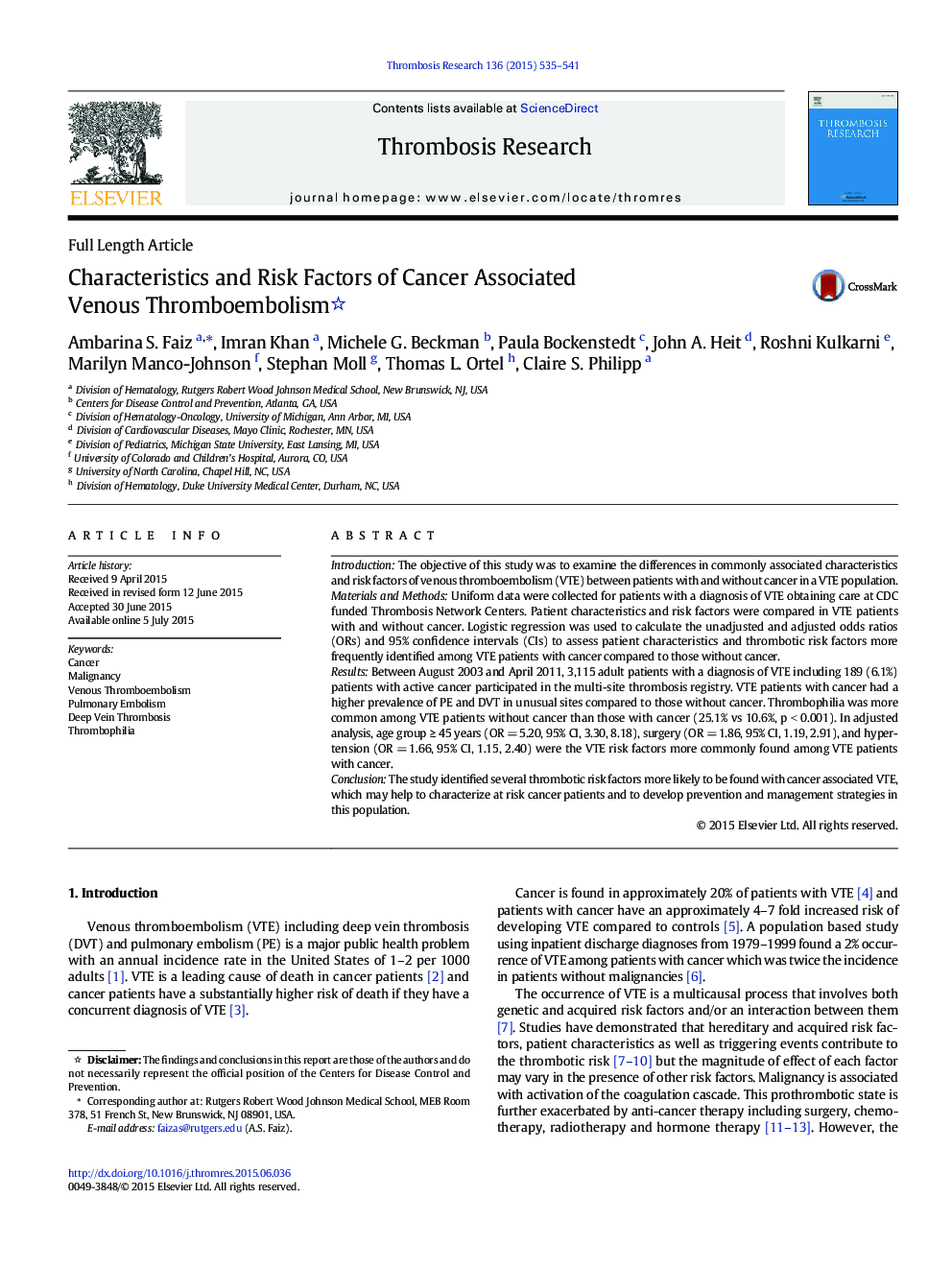| Article ID | Journal | Published Year | Pages | File Type |
|---|---|---|---|---|
| 3027064 | Thrombosis Research | 2015 | 7 Pages |
•VTE triggers may be different for those with cancer compared to those without cancer•Age ≥ 45 years, surgery and hypertension more prevalent in patients with cancer•Age ≥ 45 years for both females and males more frequent among patients with cancer•Hypertension for women and surgery for men more frequent among patients with cancer•Racial differences need to be evaluated for VTE risk factors for patients with cancer
IntroductionThe objective of this study was to examine the differences in commonly associated characteristics and risk factors of venous thromboembolism (VTE) between patients with and without cancer in a VTE population.Materials and MethodsUniform data were collected for patients with a diagnosis of VTE obtaining care at CDC funded Thrombosis Network Centers. Patient characteristics and risk factors were compared in VTE patients with and without cancer. Logistic regression was used to calculate the unadjusted and adjusted odds ratios (ORs) and 95% confidence intervals (CIs) to assess patient characteristics and thrombotic risk factors more frequently identified among VTE patients with cancer compared to those without cancer.ResultsBetween August 2003 and April 2011, 3,115 adult patients with a diagnosis of VTE including 189 (6.1%) patients with active cancer participated in the multi-site thrombosis registry. VTE patients with cancer had a higher prevalence of PE and DVT in unusual sites compared to those without cancer. Thrombophilia was more common among VTE patients without cancer than those with cancer (25.1% vs 10.6%, p < 0.001). In adjusted analysis, age group ≥ 45 years (OR = 5.20, 95% CI, 3.30, 8.18), surgery (OR = 1.86, 95% CI, 1.19, 2.91), and hypertension (OR = 1.66, 95% CI, 1.15, 2.40) were the VTE risk factors more commonly found among VTE patients with cancer.ConclusionThe study identified several thrombotic risk factors more likely to be found with cancer associated VTE, which may help to characterize at risk cancer patients and to develop prevention and management strategies in this population.
